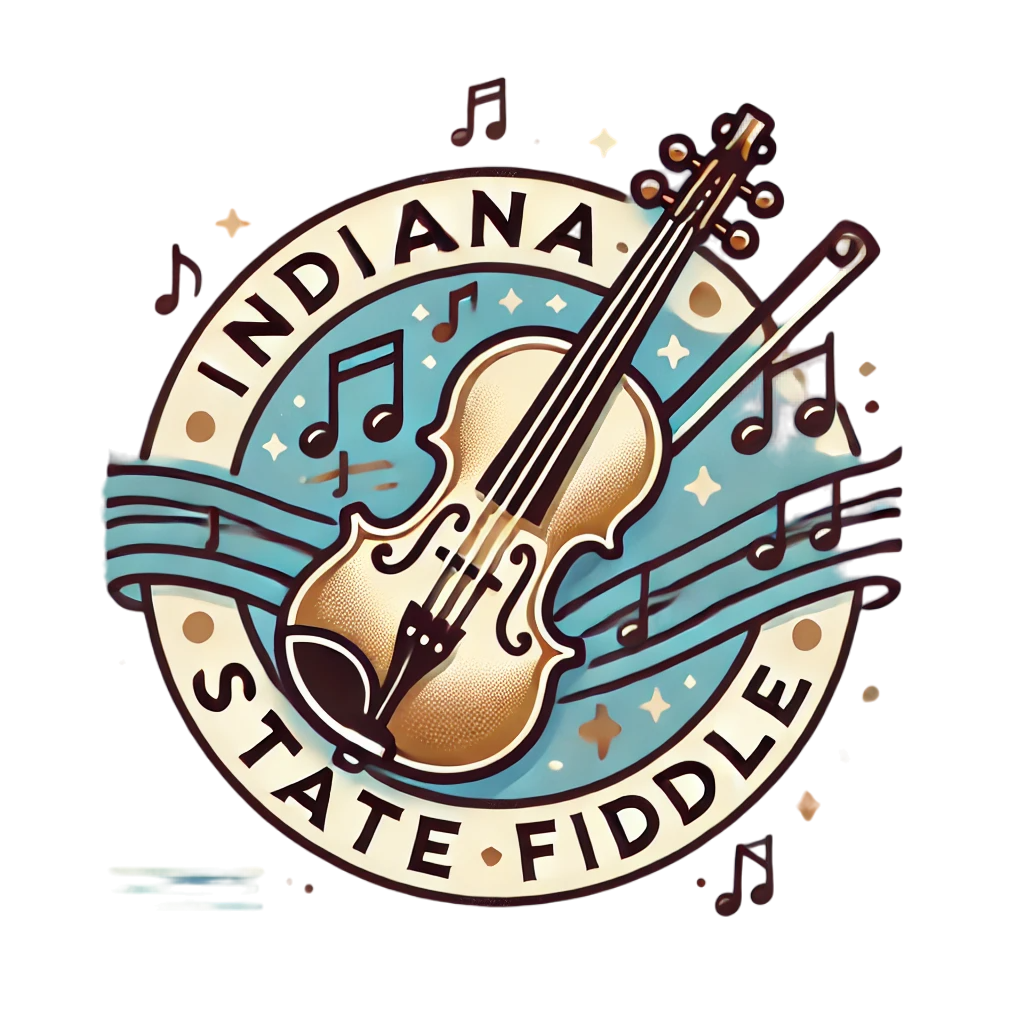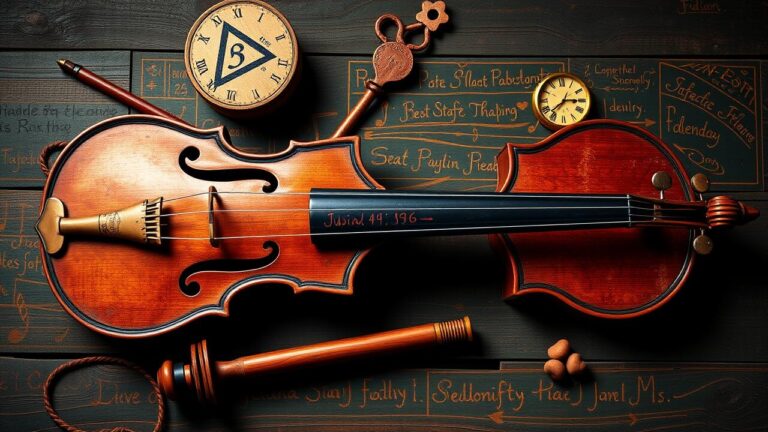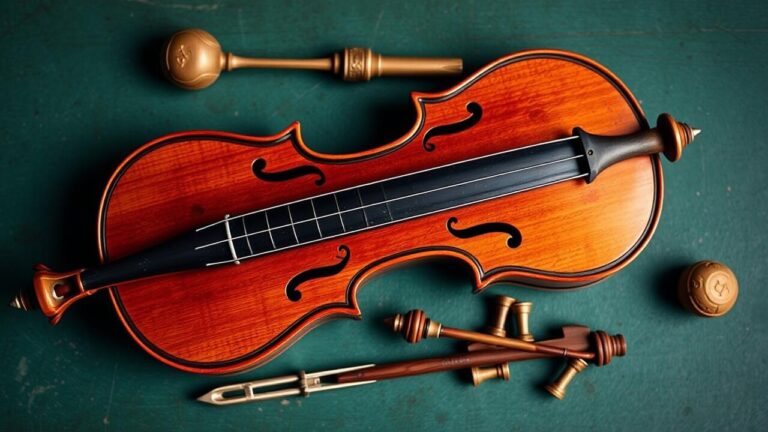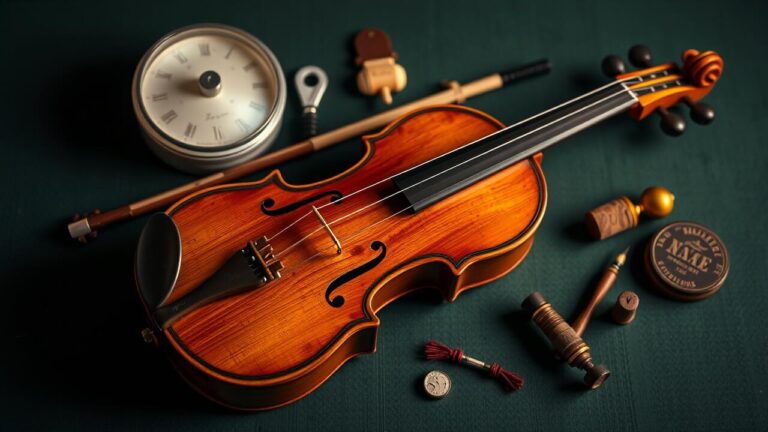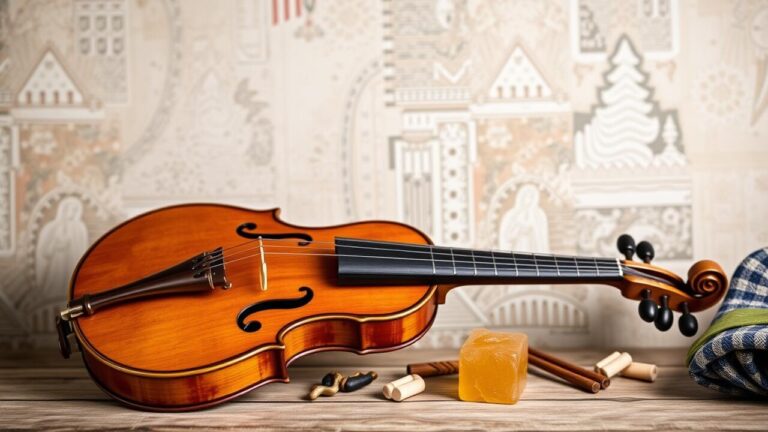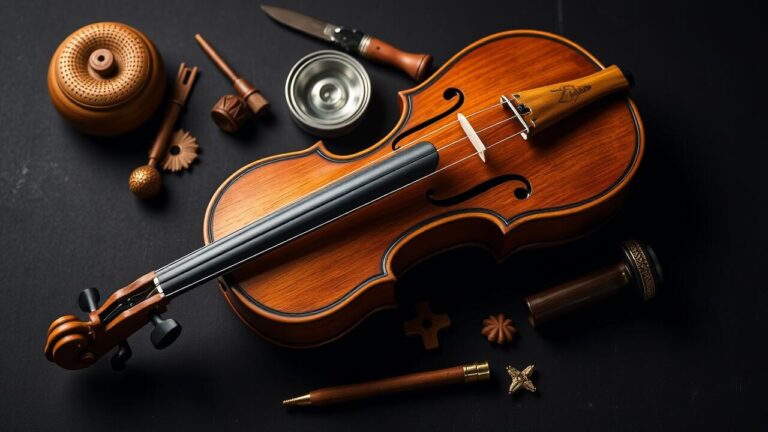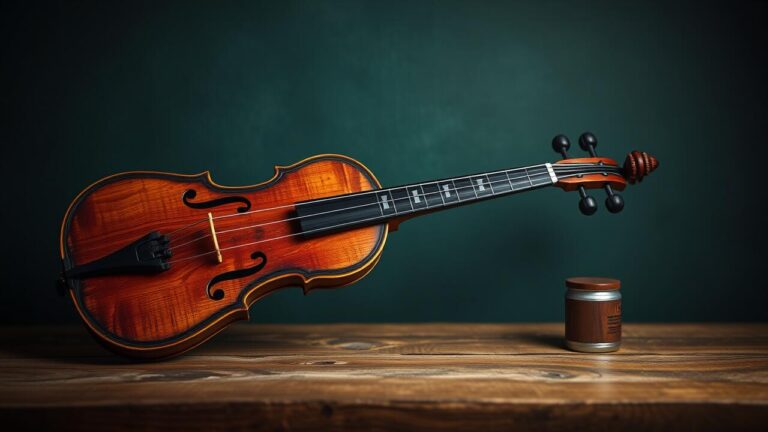Learn to play fiddle Indiana

Popular Fiddle Styles in Indiana
In the heart of Indiana, a vibrant tapestry of fiddle styles unfurls, each thread woven from the rich cultural heritage that defines this unique region. Traditional bluegrass and old-time Appalachian melodies serve as cornerstones in crafting the state’s fiddle persona. Musicians delve into intricate bowing techniques and syncopated rhythms, conjuring up lively sounds that dance through the air and resonate deeply with captivated audiences. A delightful blend emerges as many local fiddlers weave in elements from Irish and Scottish traditions—jigs and reels bursting forth to enchant listeners with their spirited energy.
Yet, amidst these cherished traditional forms, a wave of contemporary styles surges forward, claiming its place in Indiana’s musical landscape. Fiddlers are increasingly daring to mix genres; folk collides with jazz while classical influences sneak into unexpected corners. This eclectic fusion breathes new life into fiddling—keeping it fresh and irresistibly engaging—and expands its reach beyond familiar confines. Vibrant workshops and festive gatherings peppered across the state beckon musicians to dive headfirst into this diverse world of sound, honing their skills collaboratively while exploring uncharted territories of expression.
Overview of Traditional and Contemporary Genres
Fiddle music in Indiana weaves a captivating tapestry, rich with the threads of both time-honored traditions and modern innovation. Traditional styles, those echoes of yesteryear, pull from an array of cultural wells—Celtic whispers dance alongside old-time Appalachian ballads, while the unmistakable twang of bluegrass adds its own flair. Each genre pulses with its unique heartbeat; think foot-stomping rhythms igniting square dances or the hauntingly soulful strains that transport listeners to another era. Musicians often pay homage to their roots, practicing these age-old forms like sacred rituals, forging connections with their heritage even as they introduce them to fresh ears.
Yet contemporary fiddle playing? Oh, it’s a wild beast altogether! This vibrant evolution has embraced modern influences and cross-genre escapades with open arms. Today’s musicians weave traditional techniques into a colorful fabric enriched by rock riffs, jazzy improvisations, and pop hooks—creating soundscapes that are at once innovative and diverse. It beckons a new generation eager to experiment boldly with their craft—a thrilling push against the boundaries of what fiddle music can truly be. Thus, Indiana’s fiddle scene bursts forth in all its glory: alive and electric, brimming with endless avenues for exploration and artistic expression!
| Genre | Characteristics | Examples of Artists | Notable Instruments |
|---|---|---|---|
| Traditional Fiddle Music | Rich cultural roots, foot-stomping rhythms, often played in social gatherings. | Bill Monroe, The Chieftains | Fiddle, Acoustic Guitar, Mandolin |
| Bluegrass | Fast tempos, harmony vocals, and improvisation; strong emphasis on string instruments. | Alison Krauss, Ricky Skaggs | Fiddle, Banjo, Bass |
| Contemporary Fiddle Music | Fusion of various styles, incorporates elements from rock, pop, and jazz. | Lake Street Dive, String Cheese Incident | Electric Fiddle, Synthesizer, Violin |
| Phenomenon of Cross-Genre Fiddle | Experimental soundscapes and innovative compositions that challenge traditional boundaries. | Black Violin, Liz Carroll | Fiddle, Loop Pedal, Digital Effects |
Joining a Fiddle Community
Diving into a fiddle community is like stepping into a vibrant tapestry of sound and camaraderie, brimming with untold advantages for everyone—from the wide-eyed beginner to the seasoned virtuoso. Imagine connecting with kindred spirits who share that same burning passion; it creates an atmosphere ripe for learning and growth, where every note played resonates with encouragement. Group lessons? Oh, they become lively exchanges—jam sessions bursting forth as musicians swap techniques and ideas like trading cards, igniting creativity in ways one might never have imagined. And within these interactions bloom friendships that deepen one’s reverence for the art form’s rich history.
But wait! The benefits don’t end there. This network of fiddlers can catapult you toward performances, competitions, workshops—the whole shebang! Engaging with those more experienced than yourself unveils a treasure trove of insights and tips that can elevate your skills beyond what you thought possible. Plus, there’s this incredible habit among members to share resources: sheet music fluttering around like leaves in autumn and instructional materials at your fingertips—making it all too easy to dive into different styles. Being woven into this dynamic ecosystem not only sharpens your proficiency but also transforms your entire musical journey into something truly extraordinary!
Benefits of Collaborative Playing and Networking
Diving into the vibrant world of fellow fiddle enthusiasts is like stepping into a kaleidoscope of creativity, where artistic growth flourishes in unexpected ways. When musicians come together to jam, it’s not just about playing notes; it’s an exhilarating exchange of techniques and styles that can spark new dimensions in one’s own craft. The connections forged within a fiddle community often blossom into golden opportunities—think performances, workshops bursting with knowledge, and priceless lessons from those seasoned pros who’ve walked the path before.
But wait! There’s more: these group sessions do wonders for building confidence and honing performance skills. Picture this: players adapting to wild shifts in tempo and exploring eclectic musical ideas—it’s all about fostering flexibility and igniting bursts of creativity! And let’s not overlook the friendships that bloom amidst this collaborative frenzy; the bonds formed here can become lifelines in a musician’s journey. In essence, embracing this spirit of collaboration doesn’t just elevate individual artistry—it injects vibrancy into the entire musical tapestry we share!
Maintenance and Care for Your Fiddle
Ah, the delicate dance of fiddle maintenance—a ritual steeped in both art and science! To safeguard that sweet, resonant sound and extend your instrument’s lifespan, you must embark on a journey of vigilant care. Inspect it regularly: peer closely for any whispers of wear or signs of distress. Are those strings fraying at the edges? Discoloration creeping in like an unwelcome guest? Such imperfections could disrupt your melodic flow. And let’s not forget about the bow—oh yes! The hair demands scrutiny; is it taut enough to sing, or does it hang limply like a forgotten dream?
Cleaning—an oft-overlooked yet vital act—is paramount! With gentle strokes from a microfiber cloth post-performance, wipe away rosin dust and fingerprints that threaten to cloud its voice. Keep your beloved fiddle pristine!
But wait—there’s more! The whims of Mother Nature can be capricious allies or foes in this endeavor. Shield your precious instrument from extreme temperatures and humidity swings that could send shivers down its spine (and cracks through its wood!). Aim for that sweet spot: 45-55% humidity paired with a cozy temperature range of 65-75°F. Seasons change, after all; adjustments will be necessary to thwart potential warping or cracking.
And during those arid months when dryness reigns supreme? A humidifier may become your new best friend, ensuring moisture levels remain just right.
By weaving these practices into your routine, you’ll nurture not just an instrument but a lifelong companion—one ready to serenade for years ahead!
Routine Checks to Keep Your Instrument in Top Shape
The structural integrity of a fiddle—oh, how vital it is for that rich, resonant sound to flourish! One must embark on regular inspections of the body, ever vigilant for cracks or dents that could mar its tonal beauty. The bridge and sound post? They demand scrutiny too; if they’ve dared to shift from their rightful places, an adjustment might just be in order to restore harmonious resonance.
And let’s not overlook those tuners! Smooth operation is non-negotiable; after all, a loose or sticky tuner can spiral your tuning into chaos—a performance’s worst enemy lurking silently.
Then there are the strings—the very lifeblood of this melodic creation. They need periodic replacement like clockwork—wear and seasonal humidity shifts coaxing them toward retirement. Beware the rosin buildup on both strings and bow—it can muffle even the sweetest notes! Routine cleaning becomes essential here.
Moreover, don’t forget about the chin rest and tailpiece; they must hold fast as instability in these components can lead to discomfort while you’re lost in your music. And above all else: cradle your fiddle in an environment that’s gentle—free from harsh temperatures and humidity swings—to keep its condition thriving through time’s passage!
- Regularly inspect the body for cracks and dents to maintain tonal quality.
- Check the position of the bridge and sound post, adjusting them if necessary.
- Ensure tuners operate smoothly to prevent tuning issues.
- Replace strings periodically to avoid degradation in sound quality.
- Clean rosin buildup on strings and bow to preserve clarity of tone.
- Verify the stability of the chin rest and tailpiece for optimal comfort.
- Store the fiddle in a controlled environment to protect against temperature and humidity fluctuations.
Competing and Performing with Your Fiddle
Diving into competitions and performances is like unlocking a treasure chest for fiddle players, brimming with chances to flaunt their skills while weaving connections within the vibrant tapestry of the musical community. But oh, it’s not just about nailing those notes! The prep dance involves a kaleidoscope of refining techniques and practicing pieces—yes, but also gearing up mentally. Grasping the delicate art of stage presence and mastering the elusive alchemy of audience engagement can catapult one performer way above another.
And let’s talk about practice—not your run-of-the-mill kind, mind you! Regularly rehearsing in performance-esque settings builds that all-important confidence and helps shatter those pesky butterflies of stage fright; these are non-negotiable ingredients for a truly memorable presentation.
Now, when it comes to competitions? Oh boy! They often demand a curated selection of pieces that scream both technical prowess and artistic flair. Choosing an eclectic mix can showcase versatility—a musician’s chameleon-like ability to adapt. Many events come with their own specific guidelines or themes lurking beneath the surface; being well-acquainted with these nuances is paramount for effective preparation. And don’t underestimate the power of collaboration—teaming up with fellow musicians or diving into workshops can unveil nuggets of wisdom on performance strategies, elevating one’s ability to deliver a mesmerizing showcase that resonates deeply with judges and audiences alike.
Tips for Preparing for Fiddle Competitions
When it comes to fiddle competitions, preparation isn’t just important—it’s everything. Competitors must dive deep into their repertoire, choosing pieces that not only showcase their strengths but also dance across a spectrum of techniques. The art lies in striking a balance between technical complexity and emotional resonance; it’s this blend that can truly mesmerize judges and audiences alike. And let’s not forget the power of practice! Simulating the competitive atmosphere during rehearsals? Absolutely essential for building confidence. Performing in front of friends or family becomes more than just practice—it transforms into an opportunity for invaluable feedback and honing that elusive stage presence.
Now, let’s talk about physical and mental readiness—the twin pillars upon which competition outcomes rest precariously. Getting enough rest before the big day is non-negotiable if you want to hit peak performance levels, while a solid warm-up routine works wonders in shaking off tension and boosting dexterity. Ever tried visualizing your success? It may sound simple, but it’s a powerful tool for reinforcing confidence like armor against nerves. Throughout this whirlwind of preparation, keeping a positive mindset isn’t merely beneficial; it’s downright crucial! Engaging in relaxation techniques can serve as your secret weapon against anxiety, creating space for musicians to channel their focus toward delivering nothing short of their best performance when it counts most.
Expanding Your Fiddle Repertoire
Diving into the vibrant world of new fiddle pieces and diverse styles isn’t just a pastime; it’s absolutely vital for keeping that spark alive and honing your skills. The treasure trove of resources out there is staggering—think online platforms bubbling with possibilities, cozy local music shops brimming with instruments, and community workshops buzzing with enthusiasm. By immersing yourself in an eclectic mix of musical genres, you open up a realm of fresh challenges that can ignite creativity like never before. And let’s not forget the magic woven into recordings from seasoned artists—they’re a goldmine for uncovering varied interpretations and techniques!
Consider this: joining local folk sessions or jam groups can be a game-changer when it comes to expanding your repertoire! These lively gatherings often showcase an array of tunes, creating a collaborative atmosphere where knowledge flows freely among participants. Plus, attending fiddle festivals or engaging in workshops offers priceless opportunities to learn from renowned fiddlers who might unveil unique pieces you’ve never encountered. This multifaceted journey doesn’t just widen your musical landscape; it adds layers upon layers to your overall learning experience!
How to Discover New Pieces and Styles to Play
Diving into new tunes and styles can dramatically elevate your fiddle journey. Picture this: you start by immersing yourself in recordings from a kaleidoscope of fiddle traditions that lie beyond the familiar confines of your current repertoire. Think genres like bluegrass, Celtic, and old-time music—each pulsating with its own distinctive flair, ready to spark fresh inspiration and unveil novel techniques. And let’s not overlook the magic of workshops and festivals! They’re treasure troves where diverse styles converge, allowing you to rub shoulders with skilled musicians whose mastery will leave you awe-inspired. Just watching their varied techniques and interpretations can expand your musical landscape in ways you never imagined.
Now, consider harnessing online resources—they’re an absolute goldmine for unearthing new material! Websites dedicated to the art of fiddling often brimming with tabs, sheet music, and instructional videos spanning all sorts of pieces await your exploration. Social media platforms and niche forums tailored for fiddle enthusiasts buzz with recommendations and insights on what’s hot right now—the trending styles or those must-learn gems that everyone’s talking about. Getting involved in these vibrant communities opens up a treasure chest of knowledge while keeping you on the pulse of emerging trends in the ever-evolving world of fiddling!
Conclusion
Diving into the world of the fiddle is like stepping into a rich tapestry woven with cultural heritage and personal flair, particularly in the lively atmosphere of Indiana. The transition from a greenhorn to a seasoned player isn’t just a straight line; it’s an adventure packed with diverse styles to explore, local communities to join, and competitions that elevate the entire musical journey.
No matter which route you take, one thing rings true: keeping your instrument in tip-top shape and broadening your musical horizons are absolutely crucial. Collaborating with fellow musicians sparks creativity like fireworks on the Fourth of July, leading to unexpected discoveries around every corner. This collaborative spirit transforms learning and performing into an exhilarating pursuit that feels infinitely rewarding!
